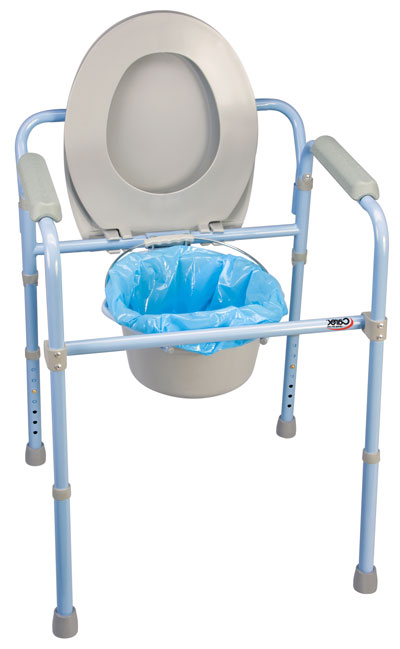For senior citizens, using the toilet can be one of the most difficult and worrisome elements of the bathroom experience. In general, the bathroom is the most dangerous room in the house for seniors; it has many slippery surfaces, sharp edges and involves a lot of motion in order to be utilized correctly. For many seniors who live at home, there isn’t a bathroom easily accessible on the main level of the house or close to the= bedroom for use during the night.
Using the bathroom requires seniors to shift their weight and move from a seated to a standing position, which can cause them to lose their balance easily. Additionally, many medications and diseases like dementia and Alzheimer’s can affect balance and make it even harder for seniors to control their balance at the toilet.
Toilet Use Safety Concerns
Mobility—Aging leads to decreased mobility and flexibility in the joints, and sitting and standing at the toilet requires the use of both knees and hips.
Balance—The act of sitting and standing at the toilet puts the body in an unbalanced position, which can make falling more likely.
Strength—A normal toilet is slightly lower than the normal seated position, and seniors often do not have the leg strength to lower and lift their bodies from a seated to a standing position.
Products that Improve Toilet Safety
Raised Toilet Seats—These toilet seats fit onto an existing toilet to raise the seat height 2 to 5 inches to a more comfortable level. They come with or without armrests and some can be installed or locked onto the toilet for added stability.
Toilet Seat Elevators—Toilet seat elevators differ from raised toilet seats in that they are used underneath the existing toilet seat. They come in standard and hinged models for easier cleaning.
Toilet Safety Rails—Toilet safety rails fit around the toilet to provide safe and sturdy grip handles for users to hold onto while sitting and standing at the toilet. There are models which can be installed onto the toilet, and other models that stand on the floor and fit around the toilet.
Commodes—Commodes can be used at the toilet or in other rooms of the home to make the bathroom more accessible.
Grab Bars—Grab bars can be installed on the walls near the toilet to provide a sturdy handle for seniors to use while sitting and standing at the toilet.
 When Is a Commode Best?
When Is a Commode Best?
Commodes are designed for anyone who struggles with strength, balance and endurance. Commodes are a great safety option for seniors because they provide the convenience of bringing the toilet anywhere in the home. A commode can be beneficial for seniors who have difficulty reaching the bathroom safely at night, or for seniors who do not have a bathroom available on the same level of the home. Using a commode in the bedroom can allow seniors the dignity and privacy of being able to use the bathroom whenever they need to and without assistance.
Many commodes also provide cost savings to seniors because they can serve many purposes. There are a number of designs that allow the commodes to be used bedside, feature a raised toilet seat and also offer a toilet safety frame. By purchasing one piece of equipment, seniors can maximize their safety in the bathroom.
Types of Commodes
Standard Commode—The simplest version of the commode generally comes with a bucket and a splash guard. The splash guard is used to reduce spray when the commode is placed over the toilet. The bucket is used when the commode seat is being used in another room of the home.
Commode with Tilt—There are also commodes that tilt and rise, giving users assistance in sitting down and standing up both at the toilet and as a bedside commode.
Multi-Use Commode—Some commodes are designed for multiple uses and can be utilized as a bedside commode, a raised toilet seat, a toilet safety rail and even a shower seat.
Folding Commode—Folding commodes are designed with a compact folding feature that allows users to store the commode when not in use or bring it along while traveling.
Bariatric Commode—These are commodes designed to accommodate users with a weight of 500 to 1,000 pounds. They are often designed with a wider seat size for added comfort. These commodes can also feature removable arms and backs to make the transfer onto and off of the commode seat easier.
Commode Accessories to Consider
- Commode bucket liners
- Clip-on toilet paper holder
- Splash guards
- Padded backrests, armrests and seats
- Larger bucket sizes to hold more waste
